Calibration: Snow
Understand how snowmelt and accumulation will affect your watershed

Before calibrating snowmelt, you must calibrate the water balance for the watershed. You need to model the snow accumulation and melt processes while executing water balance calibration. However, accurate modeling of the snowpack is not necessary for the initial calibration trials.
Water balance modeling establishes consistent soil moisture and infiltration parameters and indicates whether or not the meteorological and hydrologic data series utilized are adequate for the watershed.
Schedule Your HFAM Demo.
Snow accumulation and melt processes
Snow course data provides direct evidence about snow accumulation. When both snow depth and water content are available, HFAM compares snow water content and snow density (water content/snow depth) with model results.
Snow course measurements are a mean (or average) of several point measurements within a limited area, typically a meadow or open area in a forest. Measurement points along a snow course are at the same elevation and have similar aspect or exposure to solar radiation. Some snow courses sites include a ‘snow pillow’; hydrostatic pressure in a snow pillow measures the water content of snow that rests on the pillow.
Snow course measurements are manual. A hollow aluminum tube is driven into the snow. The weight gained by the tube is the snow water content of the snowpack. Manual measurements are most often taken monthly. Snow pillow measurements are continuous.
When comparing snow course measurements to mean snowpack results over an HFAM segment, the user needs to be aware that:
- The elevation is key to snowpack behavior, affecting both accumulation and melt. A snow course at 4900 ft may not represent an HFAM segment with a mean elevation of 4500 ft.
- Differences in aspect or slope and forest cover causes different melt rates for snowpacks. Data from any one snow course may not be representative.
HFAM users often create a land segment of one acre or one hectare at a snow course or Snotel site (a remote weather station that measures snow water content and sends the data wirelessly). Thus, HFAM makes a direct comparison between measurements and model results.
Snow Accumulation HFAM Parameters

TSNOW
To increase or reduce snow accumulation, TSNOW is the most obvious parameter to change. When air temperature exceeds TSNOW precipitation falls as rain, When air temperature is less than TSNOW precipitation falls as snow. Increasing TSNOW increases snow accumulation, and reducing TSNOW reduces snow accumulation. Changing TSNOW is effective only when significant snowfall occurs at or near 32° F. If winter temperatures are cold, well below 32° F, then TSNOW has little effect. The allowable range for TSNOW is limited in HFAM to 15°, from 25° to 40° F.

MELEV
MELEV is a physical characteristic of the land segment. It is important for snow accumulation because it affects air temperature, HFAM does not alter MELEV in calibration.

SNOWCF
SNOWCF affects snow accumulation proportional to its value. Changing SNOWCF from 1.0 to 1.1 increases snow accumulation by 10 percent. Snow catch in precipitation gages is affected by wind speed during storms. Physically realistic values of SNOWCF are in the range from 1.0 to 1.5. SNOWCF is lower if precipitation gages have shields.

SNOEVP
SNOEVP affects sublimation from the snowpack rather than accumulation. Sublimation is not significant in most watersheds. However, it can be substantial where windy and low humidity conditions are common.
Learn more about how groundwater flow impacts a watershed.
Snow Aging and Transformation
The effects of aging on snowpack characteristics are diverse and are of some importance. HFAM calculates the albedo of the snow surface. However, HFAM does not provide a calibration parameter to alter the snow surface albedo.
Field data for calibration of snowpack characteristics is limited to snow density data from snow courses. Snow density found by HFAM results from RDCSN, modified by melt and freezing of meltwater in the snowpack. Snow density does not directly influence melt rates and has only a limited effect on water leaving the snowpack. Snow density is usually not calibrated.
RDCSN – RDCSN is the initial density of new snow, its water content divided by its depth. HFAM may change RDCSN if model snow density is high or low, compared to snow course data.snow course data.
MWATER – The liquid water holding capacity of the snowmelt. Snow density during the winter and spring is also affected by melt rates, and by MWATER.
LAT – HFAM uses LAT in the calculation of snow surface albedo. It is a physical characteristic of the watershed that is not calibrated.
SHADE – SHADE controls the short wave solar radiation that reaches the snowpack. SHADE is increased by forest cover, or by slope in an HFAM land segment. It can be increased or reduced by the segment aspect.
CCFACT – CCFACT controls both convection and condensation melt, or more correctly the rate of convective or condensation heat transfer to the surface.
MGMELT – MGMELT, maximum ground melt, is the heat transfer from the earth’s core to the land surface, in inches (or mm) of melt per day, from the earth to the bottom of the snowpack. It is zero if the soil beneath the snowpack is frozen. MGMELT is about 0.01 inches or 0.25 mm of snowmelt per day.
Heat Exchange and Melt
The processes that melt snow (in order of their significance for most watersheds):
- Solar radiation
- Convection
- Condensation
- Ground melt
- Melt due to rainfall
Melt rates for the snowpack require calibration.
The net radiation exchange algorithm on the snow surface:
Short Wave Radiation x (1.0 – albedo) + the net Long Wave Radiation Exchange.
Long wave radiation is emitted by the snow, forests and cloud cover in the atmosphere at a temperature dependent, near constant rate.
Since snow surface albedo is calculated internal to HFAM, SHADE is the only parameter that alters the net total radiation on the snow surface.
The CCFACT algorithm has the form:
Heat Transfer=CCFACT x Wind Velocity x (Air Temp – Snow Temp) x an elevation adjustment.
Wind velocity and air temperature play important roles.
The wind velocity on, or at, the snowpack is seldom known. Wind velocity measurements may be made many miles from the watershed, or a land segment in a watershed, and the wind is altered by elevation and forest cover. Air temperature can also be uncertain. Thus, CCFACT can vary through a considerable range to account for uncertain meteorologic conditions on the snowpack.
 Calibration Procedure
Calibration Procedure
The HFAM parameters affecting Snow Accumulation and Heat Exchange and Melt are the only parameters that HFAM typically calibrates. The Snow Aging and Transformation parameters and the Snow and Soil parameters are run using either physically defined or default parameter levels.
There are two parameters that affect Snow Accumulation: TSNOW and SNOWCF. However, they are usually sufficient to fit model results to winter snow course measurements. A change in TSNOW of only 1 degree Fahrenheit can cause a glacier to grow or shrink. HFAM consolidates snowpacks into glacial ice if the supply exceeds melt. SNOWCF (snow correction factor) scales precipitation falling as snow.
For Heat Exchange and Melt, HFAM uses CCFACT (snow condensation and convection melt). CCFACT is effective and used to change the timing of snowmelt as necessary.
Refinements in snowmelt calibration are specific to weather sequences in particular watersheds. There is a need to consider how each process is affecting a particular snowmelt period to find guidance on how process parameters could be affecting that period.
![]() For example, if melt released from the snowpack needs to be increased, the actions would be:
For example, if melt released from the snowpack needs to be increased, the actions would be:
1) To increase CCFACT
2) Review SHADE level

